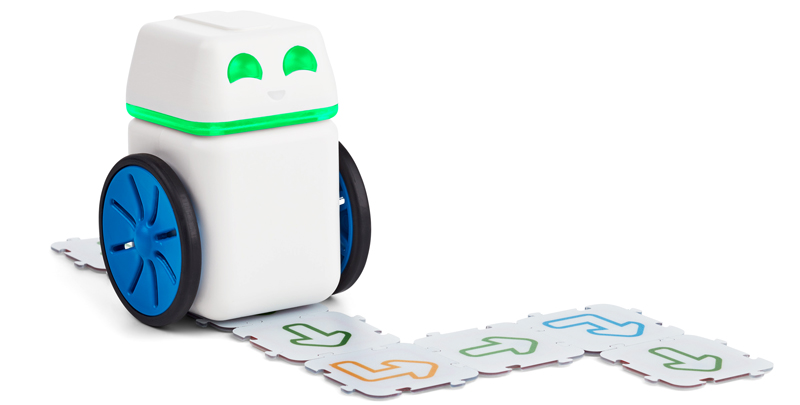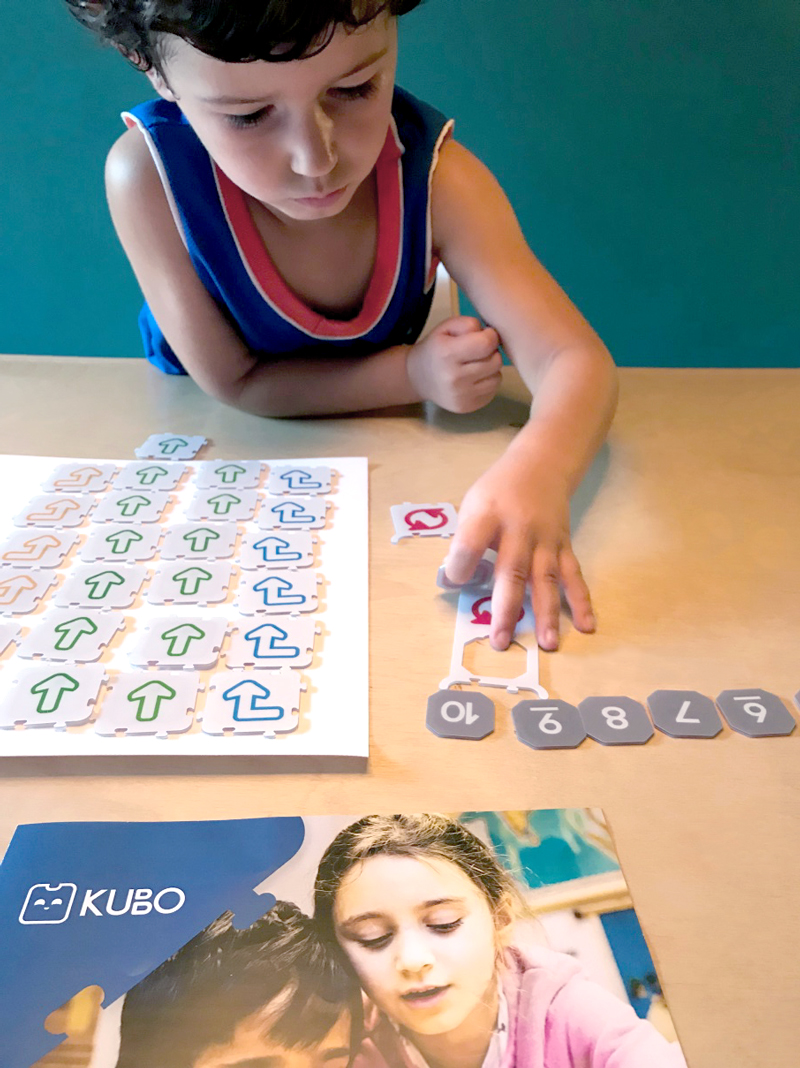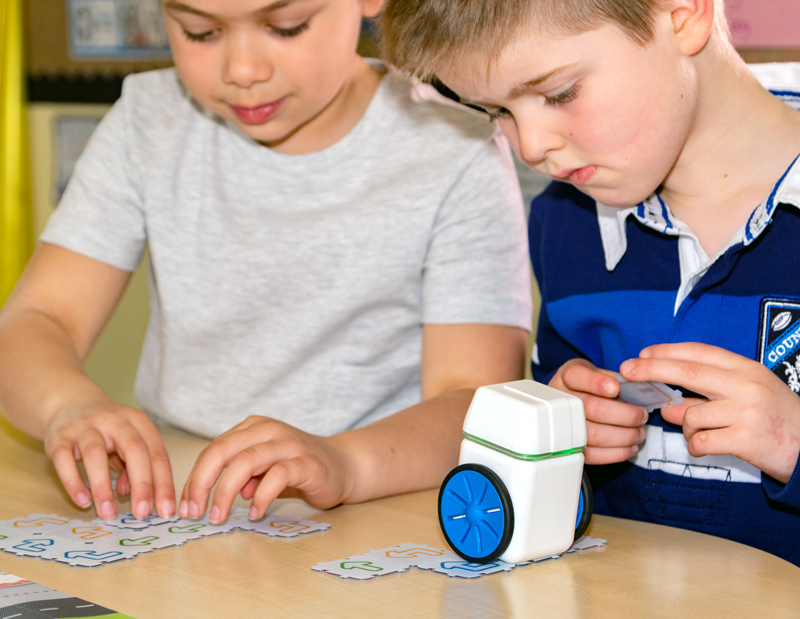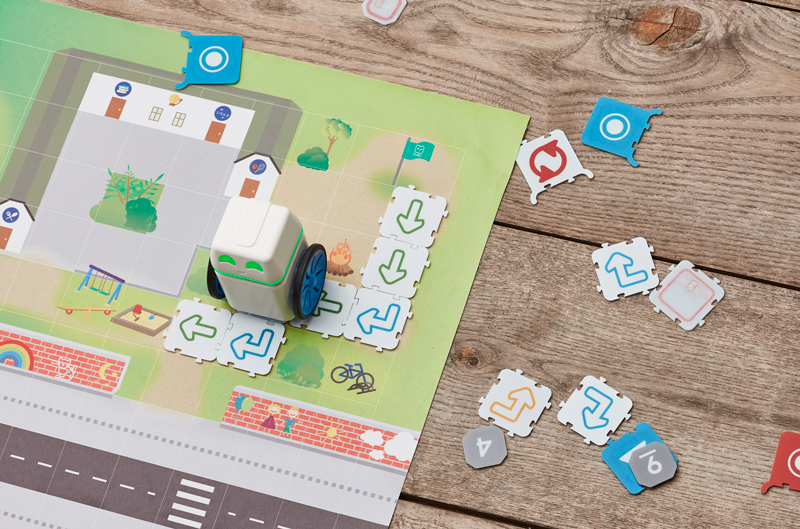Introduce Little Ones to Coding, Screen-Free, with KUBO | Tech Review
A screen-free coding robot that had to be tried to be believed.

As a parent of two children under five, I know it’s important to teach my little digital natives coding and other tools they’ll need. I struggle to find a balance between exposing them to these tools, and providing the space and time to play offline. As an early childhood educator I always gravitate towards hands-on, play-based, and language-rich activities. When asked to try KUBO, a new screen-free coding program for children ages four to 10, I was most interested to see if children could really play with it, and, in doing so, if they could actually learn the basics of coding?
 |
Jack playing with Kubo |
KUBO Robotics, a Denmark-based company, recently partnered with Pitsco Education to bring KUBO to kindergarten to Grade 2 classrooms across the United States. The Tag Tile programming language works like a puzzle with pieces that snap together, giving tactile feedback and exercising fine motor skills. The language is graphic- and symbols-based, therefore suited to all reading abilities. No previous coding experience is required, and children are meant to spend a good deal of time experimenting and learning through play.
Wary of product age ranges that reach into early childhood, I felt compelled to test KUBO with my four-year-old. Could he really create algorithms when he still puts his pants on backwards?
Jack, newly fond of jigsaw puzzles and street signs, began by interpreting the Tag Tile symbols. As he tinkered, I asked open-ended questions such as “What would happen if we put these two symbols together?” This is the same approach I use to scaffold children’s learning through play, so I was delighted that KUBO prompted this process. After 20 minutes, we mastered routes and functions! Although we had a great time, it was hard to tell if Jack grasped the coding concepts behind the play. Later while reading together he spelled out a word and said, “I remembered the letters like the robot remembered our plans.” He got it!
I reached out to one of Brooklyn Public Library’s most tech-creative librarians to see if he’d like to test KUBO, which he’d seen at a conference and already imagined using in his Little Scientists program. Cameron Myers, Children’s Librarian, bravely placed KUBO on the floor in the children’s area, and immediately attracted two toddlers and an 11-year-old. He introduced the robot, let them explore the pieces, and added coding language and challenges along the way. Though it kept them happily engaged for 40 minutes, the age range presented challenges.
 |
6-7 year old kids |
With that in mind, he came up with different uses for different age groups within the broader range.
For the younger kids, “It’s a great activity for a robot-themed storytime, along with a robot book or the story of Ada Lovelace,” he said.
Cameron also saw a KUBO activity as a great fit for his Coding Challenge program for ages 6-9, where he sets up stations using different programming platforms like Scratch Jr. He was most excited to use the Classroom Edition during a first grade class visit, particularly because of the intuitive nature of the product: “It comes naturally, so you can teach the theory and vocabulary along with active exploration, that way they grasp it better.” VERDICT: KUBO is a hands-on, screen-free way to explore coding and programming with young children. The play-based nature of KUBO gives adults more opportunities to infuse rich language and vocabulary into the process. The actual materials are motivating, child friendly, and conducive to learning in a social context like the library. Offline coding is a great alternative for young children at home, in schools, and libraries—but KUBO may be prohibitively expensive. Single editions (one KUBO robot, one coding activity pack, one activity map, one quick start guide, and one micro USB charging cable) are $279, but are “intended to supplement a classroom edition.” A four pack (4 KUBO robots, four coding TagTile sets made up of 46 tiles, five printed activity maps, one blank master copy map for creating your own challenges, one multi-charger box to charge up to five robots, and free lesson plans and coding license) is available for $1,095.
VERDICT: KUBO is a hands-on, screen-free way to explore coding and programming with young children. The play-based nature of KUBO gives adults more opportunities to infuse rich language and vocabulary into the process. The actual materials are motivating, child friendly, and conducive to learning in a social context like the library. Offline coding is a great alternative for young children at home, in schools, and libraries—but KUBO may be prohibitively expensive. Single editions (one KUBO robot, one coding activity pack, one activity map, one quick start guide, and one micro USB charging cable) are $279, but are “intended to supplement a classroom edition.” A four pack (4 KUBO robots, four coding TagTile sets made up of 46 tiles, five printed activity maps, one blank master copy map for creating your own challenges, one multi-charger box to charge up to five robots, and free lesson plans and coding license) is available for $1,095.
Jessica Ralli is coordinator of early literacy programs, Youth & Family Services, Brooklyn Public Library.
RELATED
The job outlook in 2030: Librarians will be in demand
The job outlook in 2030: Librarians will be in demand
ALREADY A SUBSCRIBER? LOG IN
We are currently offering this content for free. Sign up now to activate your personal profile, where you can save articles for future viewing






Add Comment :-
Be the first reader to comment.
Comment Policy:
Comment should not be empty !!!